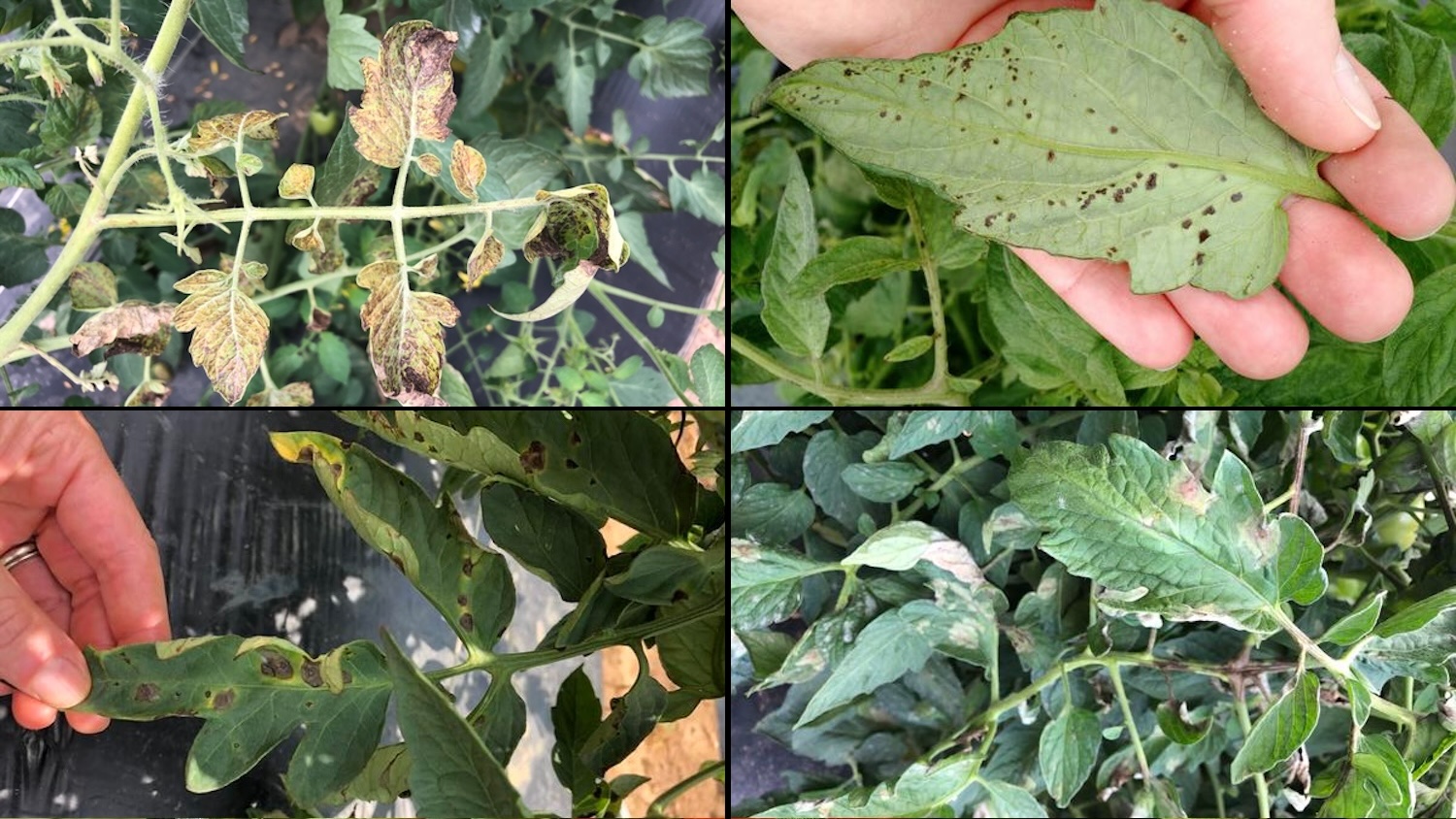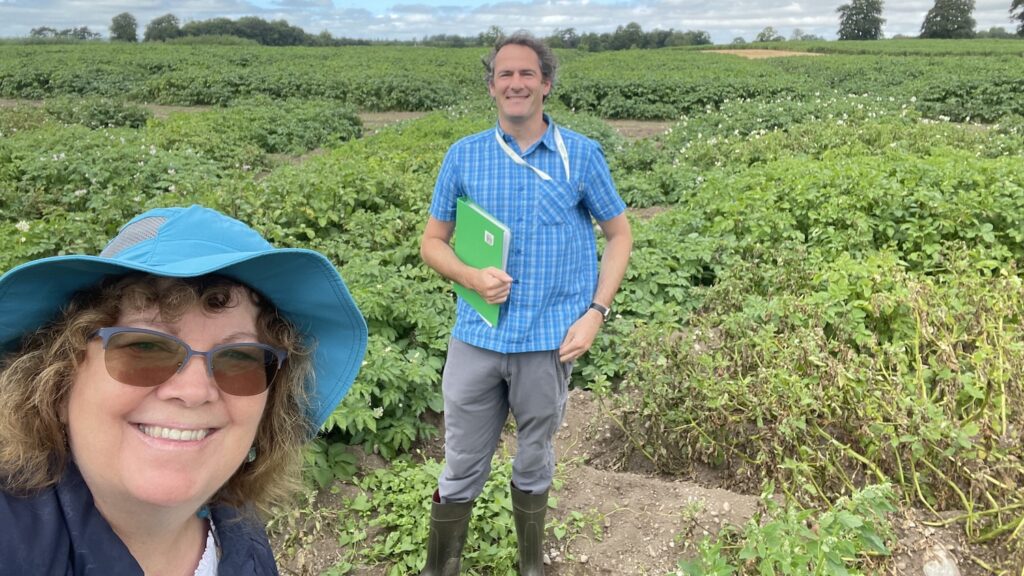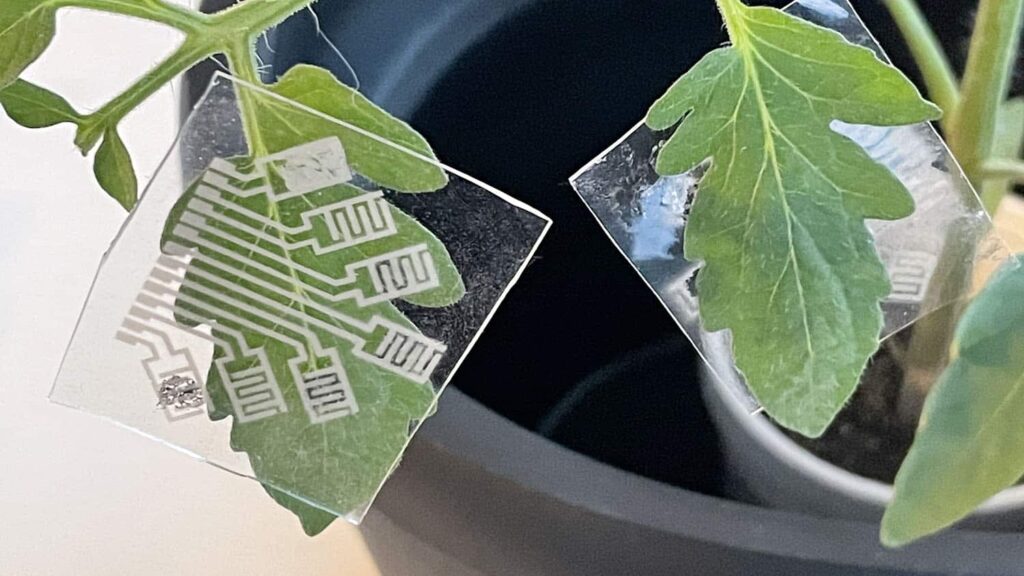Toward Better Plant Disease Prediction
The interdisciplinary Plant Aid project created advanced tools for in-field detection and diagnosis of plant disease pathogens, along with a promising system for the timely prediction and prevention of global plant pandemics.

Each year, farmers worldwide lose 20% to 40% of their crops to disease. To help farmers reduce these losses, North Carolina State University researchers are using knowledge gained over the past four years to better predict plant disease epidemics.
The 2020-23 Plant Aid project, funded by the university’s Game-Changing Research Incentive Program for Plant Sciences Initiative, or GRIP4PSI, created and tested novel disease sensors, diagnostics and predictive tools for plant diseases.
William Neal Reynolds Professor Jean Ristaino, of NC State’s Department of Plant Pathology and Entomology, spearheaded the project. She said the $556,250 in GRIP4PSI funding was key in bringing together the kind of diverse faculty expertise needed to help growers reverse a rise in plant disease outbreaks.
These outbreaks have been exacerbated by climate change and new fungicide-resistant strains of plant pathogens that can be transmitted through global plant trade, she said.

Plant Aid’s precursors
Ristaino says that better plant disease prediction will put growers in a better position to take action before disease occurs, rather than having to wait until disease is detected and diagnosed.
“What usually happens is that when we have major plant disease pandemics, it’s all hands on deck to try and solve the disease problem, figure out where it came from, and try to develop control strategies,” Ristaino said. “What we’re doing now with predictive tools is trying to work in the pre-epidemic stage: What are the signals that might occur that make us realize a disease outbreak is going to happen?”
In recent decades, NC State has been building the foundation to make such prediction possible. It created centers such as the Center for Integrated Fungal Research and the Center for Geospatial Analytics, and it began hiring new faculty members – five are now on board – as part of a new Emerging Plant Disease and Global Food Security Cluster.
Ristaino said the Plant Aid project gave these faculty members the jumpstart they needed to work with others in different disciplines on important diseases that threaten agriculture in the United States and globally.
“It allowed us to start brainstorming, developing tools and technologies for disease surveillance that we couldn’t have developed if we’d worked independently,” Ristaino said. “We started ‘breaking down silos.’”
The project’s evolution
Initially, the interdisciplinary Plant Aid team focused on early blight, tomato spotted wilt virus, bacterial spot and late blight in tomatoes. The team developed sensors and rapid diagnostic assays that were subsequently evaluated for use in farmers’ fields.
They also began work on a Plant Aid database with the Center for Geospatial Analytics’ geographer Chris Jones. Their goal: to better predict disease outbreaks by linking the sensors and assays to remote crop health sensing systems, genomic surveillance, real-time spatial and temporal data analytics and climate data.
Gaining momentum
The Plant Aid project has taken new directions in recent years as the researchers have forged academic, industry, and international partnerships, applying the sensors and other tools to diseases of other crops, animals and even humans. They’ve also gotten closer to real-time detection, diagnosis, prediction and prevention.
Preliminary data garnered during GRIP4PSI, Ristaino said, “rolled right into subsequent grants.”
Over five years, Plant Aid researchers have received several million dollars in funding from the U.S. Department of Agriculture’s Animal and Plant Health Inspection Service to develop additional surveillance and prediction tools. That funding supported work related to Phytophthora infestans, which leads to late blight on potatoes and tomatoes, and Phytophthora ramorum, an organism that causes tree diseases in the western United States and spreads in nursery crop diseases.
In addition, a team led by Ristaino won a $1 million grant from the National Science Foundation’s Predictive Intelligence for Pandemic Prevention program, or PIPP. This project supported expansion of the Plant Aid database and generated additional knowledge for predicting when and where plant diseases will emerge.
The grant enabled researchers to validate the Plant Aid database with the pathogen that causes late blight and the one that leads to cucurbit downy mildew, an important cucumber, cantaloupe, watermelon, squash, and pumpkin disease.
It also resulted in a symposium to explore how human attitudes and social behavior affect plant disease transmission and adoption of sensor, surveillance, and disease prediction technologies. This Predicting the Next Plant Disease Pandemic Symposium symposium helped lay the groundwork for subsequent partnerships and large funding opportunities.
Meanwhile, a team led by Qingshan Wei, of NC State’s Department of Chemical and Biomolecular Engineering, leveraged earlier sensor-development work to secure a $600,000 National Science Foundation Convergence Accelerator grant to finetune the sensors to best meet the needs of growers and other users.
The devices, which detect volatile organic compounds, have been tested for tomato, potato and rhododendron diseases and could be adopted for other crop diseases and for human and animal medicine.

Moving ahead
Today, Plant Aid-related projects span five NC State colleges as well as other universities, government agencies, international partners, and the agricultural industry. Ultimately, Ristaino hopes the work culminates in a center that will help growers in North Carolina and beyond. Such a center would continue to develop and deploy new tools and a robust, real-time prediction system for a wide array of plant diseases around the world.
“Right now, prediction of plant disease pandemics is unreliable because of a lack of real-time detection, surveillance and data analytics to inform decision-making and prevent the spread of plant diseases,” Ristaino says. “What we’re trying to do now is to get analysis streamed down to a matter of days or even a day so that a grower can make decisions that can improve global food security and their bottom line.”
NOTE: Interested in learning more about Plant Aid? The Center for Geospatial Analytics has created a new web portal that describes the teams’ future goals and lists global researchers involved in the plant disease predictive intelligence research.


